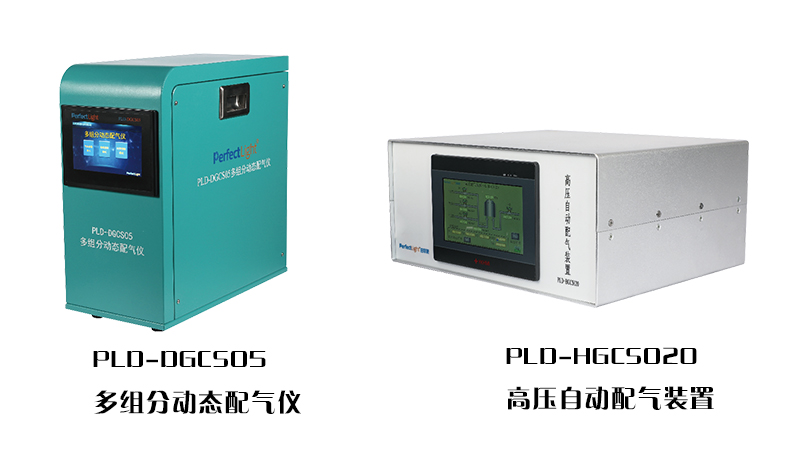In common chemical reactions, gases are often used as reactant gases. Typically, the gases used are mixed, proportioned, or diluted.
The common methods for gas blending are divided into two types: static gas blending and dynamic gas blending.
Static Gas Blending
Static gas blending involves introducing a certain amount of gas feedstock into a container with a known volume and then diluting it with a diluent gas for uniform mixing. The feed gas used can be pure gas or a mixture of known concentration. Usually, gas cylinders are directly connected to the reaction apparatus to be filled using pressure reducing valves and mass flow meters. The reaction apparatus can be a pressure vessel, reactor, or tube furnace. Static gas blending is typically simple in equipment and easy to operate, but it has the following issues:
1. Due to the reactive nature of pollutants in the atmosphere, prolonged contact with the container walls may result in reactions. There may also be adsorption of gases on the container walls, leading to inaccurate gas concentration.
2. When gases are introduced, the outlet end of the reaction apparatus must be closed. Improper flow control can lead to unsafe pressure levels inside the reaction apparatus.
3. The maximum achievable pressure is limited by the gas source, and it is not possible to achieve pressures higher inside the reaction apparatus than at the gas source outlet. This limits the range of use and can result in gas wastage.
4. During gas filling, precise pressure control cannot be achieved.
Dynamic Gas Blending
Dynamic gas blending involves continuously delivering feed gases of known concentration into a gas mixing chamber at relatively low flow rates and specific gas ratios. After mixing in the mixing chamber, the gas is continuously output at a higher flow rate and with a constant concentration for use in the reaction. Compared to static gas blending, dynamic gas blending can provide a large flow of mixed feedstock gases and can also obtain standard gases with the desired concentration by adjusting the flow ratio of feed gases and diluent gases. This method is especially suitable for preparing low-concentration standard gases, which are essential in environmental air and waste gas monitoring. Standard gases are used as the basis for testing and evaluating sampling efficiency, creating standard curves, calibrating analytical instruments, and conducting quality control in environmental monitoring.
Perfectlight Technology offers two equipment options: the PLD-DGCS05 Multicomponent Dynamic Gas Blending Instrument and the PLD-HGCS020 High-Pressure Automatic Gas Blending Device, designed for experimental systems with different reaction pressure requirements.
